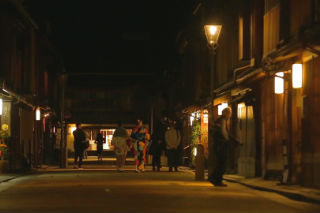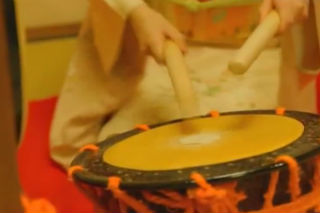Town with nostalgic taste
There are 3 old Chayagai (entertainment districts) where you can sense the nostalgic past, the Higashi Chayagai, Nishi Chayagai, and the Kazue Machi Chaya Gai. Higashi Chayagai is the largest district, designated as Conservation District of Traditional Buildings with ”bengaragoshi” rouge latticed doors of the Chaya (literally teahouse, institution where Geisha girls are dispatched for drinks and games) line both sides of the cobble pavements. During the day, the neighborhood attracts many tourists, but at night with few visitors and sparsely lit streets, the nostalgic ambience is enhanced. Nakata appeared in his ”hakama” and ”kimono”. He walked down the cobbled pavements commenting, ”It feels like a movie set, as though we’ve traveled into the past.”

Ozashiki asobi at “Harunoya”
Nakata headed for Harunoya, in Higashi Chayagai. The proprietress greeted us and we were given the opportunity to experience ”ozashiki asobi” (teahouse games). We are directed to the ”ozashiki” room, where three geiko (≒geisha) showed us the ”ozashiki taiko” druThe first number was the ”Take ni Suzume (sparrows in the bamboo tree)” also called ”Takesu”. It is a light, rhythmical tune played by the ”taiko” drums, the ”shamisen” (three stringed banjo-like instrument) , and singing. It is said to be the most difficult out of all ”taiko” tunes. Following this, the ”Mushi Okuri Taiko” was played. In Ishikawa, there are many ”taiko” tunes about getting rid of bugs, and this tune was arranged especially for the ”ozashiki”. One person performs standing, while the other sits and strikes the ”taiko”.

Playing the “taiko”
After the performance of ”Mushi Okuri Taiko” the ”geiko” urged Nakata to give it a try. Nakata sat in front of the ”taiko” and performed in the center. The four of them played together, as he was taught how to strike the ”taiko”.




